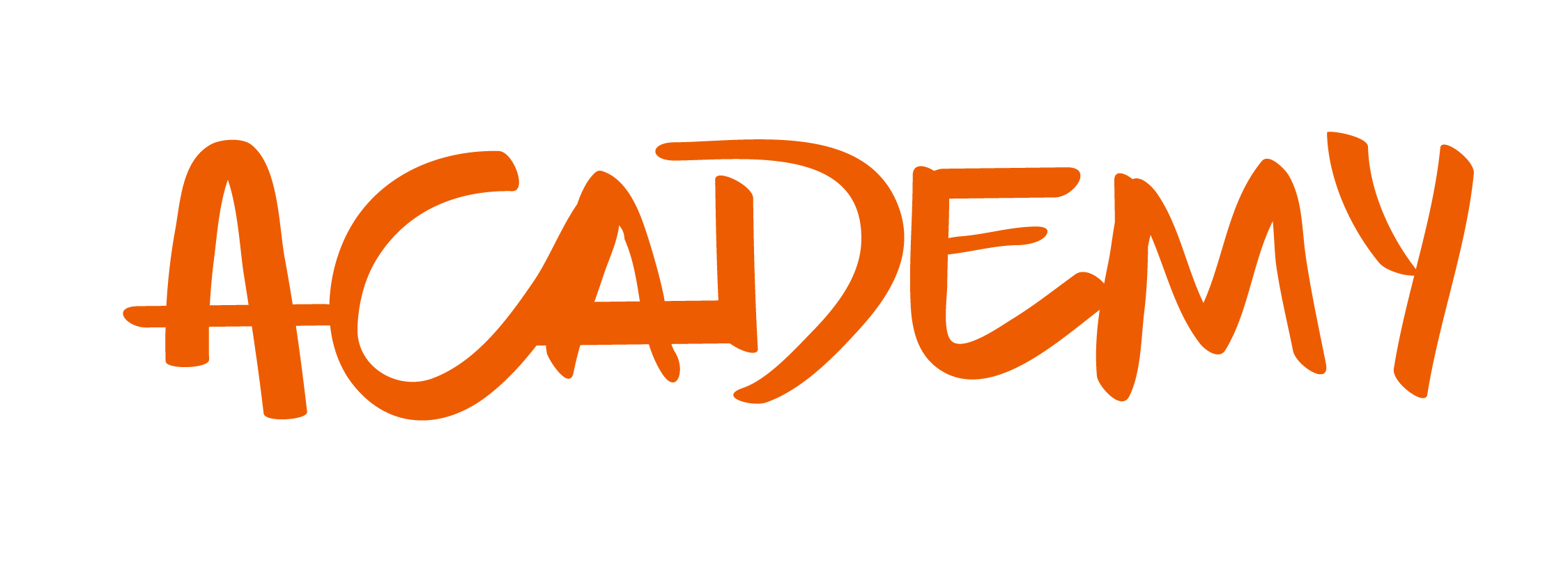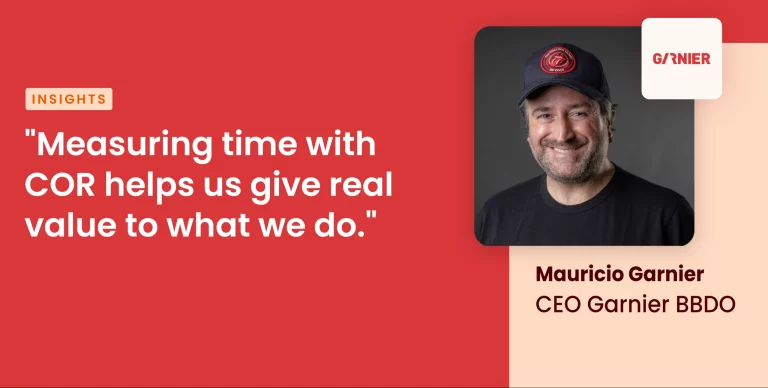If you work in the professional services industry, you would’ve, at some point, used the phrase: gross profit margin. But what does it mean? How do we measure it? And how do we improve it? In this article, we’ll explore the answer to all these questions.
Profitability: How to measure it in professional services businesses
In the professional services industry, there are several different types of profit margins to take into account when measuring profits. In order to help us fully understand, let’s first define some key terminology:
Revenue
This is your business’ gross income from the sale of its services before deducting operating costs. For example, a start-up social media agency receives $30,000 from clients in the month of August, so this is sales revenue for that month. Typically, businesses publish their income in their quarterly and annual financial statements.
Cost of goods sold (COGS)
As the name suggests, this figure represents the direct costs associated with the product or service sold. In the professional services industry, the COGS is often the cost of time spent working on a project. For example, a web designer charges clients $100 per hour. They’ve just completed a 10-hour project, so its COGS is $1000 (10 x $1000 = $1000). It would also include the cost of any specific materials, equipment, or software involved in delivering the project, as well as any expenses incurred. Generally speaking, COGS is variable and is different for each project.
Gross profit
This is the total amount of money left over after deducting the costs of goods sold from your revenue. Let’s keep with our web designer, who’s charged their client $2000 for the project. The COGS is $1400, which includes $1000 worth of their time, plus $400 in expenses – let’s say they flew to meet their client in person at their San Francisco. In this case, the gross profit is $600 ($2000 revenue – $1400 COGS = $600).
Gross profit margin
This is the ratio of profit to the COGS, it is measured as a percentage. Keeping with our web designer, their gross profit on their last project was $600, which means a gross profit margin of 30% ($600 is 30% of $2000, the total gross revenue).
Net profit
Net profit factors on overall business operating costs, and not just the COGS for a particular project. These will include indirect costs, like the maintenance of the real estate, as well as interest expenses and taxes. In bigger organizations, it would also include the wages of support staff, i.e team members who don’t work directly on a client project, such as IT and HR. It includes other employee costs as well, like healthcare and health insurance. These operating expenses are also known as overheads and usually include a company’s fixed costs. To work out the net profit, we need to total all of our operating costs, not just the COGS, and deduct this figure from the gross revenue. Net profit is commonly referred to as the bottom line.
Net profit = Total revenue – COGS – operating expenses – interest expenses – tax
Let’s go back to our start-up social media agency, and see their net profit for the month of July. These figures are demonstrative and to the nearest 1000, for ease of calculation. They don’t reflect realistic numbers.
Total revenue – $30,000
Cost of goods sold – $12,000
Operating expenses – $11,000
Interest – $400
Tax = $3000
So their net profit is $3,600 ($30000 revenue – $26,400 total costs = $3,600)
Net profit margin
As with gross profit margin, this is the ratio of net profit to total business costs, measured as a percentage. So, our social media agency has a net profit margin of 12% ($3600 is 12% of $30,000). This is also referred to as the net operating profit margin.
Gross profit margin vs net profit margin – what’s the difference?
With two KPIs that measure profitability, it can be confusing knowing the difference and when to use them. So why are the two used? And what are the key differences?
Gross profit allows a business, and its stakeholders, to determine the profitability of goods and services sold. This allows the organization to understand where the bulk of profits come from, which helps them to identify growth and optimization opportunities.
For example, a digital marketing agency provides SEO and PPC services. It carries out a profit analysis and sees that PPC has a gross margin of 35%, while SEO sits at 20%. Given its performance, the company directors decide to expand the PPC offering, hiring more employees and sourcing more clients. They also task their product team with refining and improving the SEO product to increase its gross margin. By measuring gross profit, a company can understand the strength and value of its services in the marketplace, as well as setting pricing. It can also determine how much of a service it needs to sell to be profitable.
Net profit, on the other hand, is used to assess the overall performance of a business. As it takes into account all operating expenses, net profit doesn’t directly help to determine the success and viability of a product. Instead, net profit shows how efficient a business is run, and how effective it is at controlling costs. For example, a graphic design company may have a high gross margin on its products, but if its overhead costs are high, its net profit margin will suffer. In this case, the business would need to make improvements internally, such as sourcing a lower-rent office and improving the efficiency of internal processes.
This metric is often used to ascertain a firm’s financial health. That said, a low net profit margin isn’t always a bad sign. If a business grows its revenue and then re-invests it into further growth, that would be reflected by a lower net margin – even though the business is being successful and growing.
In the rest of this article, we’ll focus on gross profit margins.
Benchmark: Ideal Gross Profit Margin for Professional Services Businesses
So now we know how to measure profitability and the difference between net and gross profit. But what metric should we be aiming for? What’s an ideal gross profit margin for the professional services business?
Well, unfortunately, the answer isn’t that black and white. Gross profit margins for professional services vary dramatically according to the industry. It all depends on the market, competition, and demand. However, the industry average for a professional services company is around 30%.
Financial information firm Sageworks published a study in 2016 of the professional service industries with the highest margins. It found that legal services and bookkeeping were among the top-performing sectors. Other industries, like design, also had a good profit margin.
Improving your Gross Profit Margin
So now we know that 30% is an average benchmark in the professional services industry. But, how do we go about improving our gross profit margin and increasing revenue? Here are some tips and steps you can take to reach higher profit margins.
Increase the cost of your services
It sounds simple, doesn’t it? To increase your gross profit margins, increase your pricing. Let’s go back to our web designer, James, who has a solid profit margin of 30%. He currently averages a monthly gross profit of $4800, but has plans to invest in the business, so wants to be earning $5500 per month. Taking on more projects isn’t an option, as he’s already at capacity.
Therefore, James decides to put his pricing up. He takes on 8 projects each month at an average gross revenue of $2000 per project, or $16,000 per month. So, to earn $5500 in gross revenue, he’d need to charge a gross margin of 34.8%.
This is an example of reverse engineering our figures to work out gross profits – we decide how much extra income we need in dollars, and adjust the metrics accordingly.
But if only it was that simple. While increasing project pricing is an obvious solution, there are many variables and factors at play that determine the price to a client. Professional services organizations usually can’t just hike their prices up too much, without refining their offering. Otherwise, they risk pricing themselves out and losing market share to the competition.
Be innovative and find new niches and ways to sell your services
As we’ve just established, the easiest way to increase gross profit margin is to increase prices, but external factors make this very hard to do. Instead, professional services firms should get creative and find new niches and ways to sell products to increase gross margins. To do this, marketing teams should conduct industry research and product analysis to see where opportunities lie.
For example, a creative agency has a team of copywriters who work on general writing projects. Their Google and LinkedIn SEO content has recently proved successful, with several clients’ websites and LinkedIn pages now appearing on the first page of search results. Therefore, the creative agency decides to focus on SEO writing and uses case studies of recent successes to sell these services. As they have clear, recent examples of successful projects, the team is able to command a higher margin. This is an example of how a diversified product offering, and reimagining your sales message are effective ways of increasing your profit margins.
Use Profitability Index to decide which projects to accept
In project management, one way of deciding whether or not a project should go ahead is by using the Profitability Index (PI) metric. This figure is a ratio that allows services firms to determine the potential future profit of a project. If the PI is greater than 1, the project will be profitable. While if less than 1, it’ll result in a loss. And a project will break even if its PI is equal to 0.
So how do we work out PI for a potential project? We take the present value of future cash flows and divide it by the cost of taking on the project. Cash flow is the money that comes in and goes out of any business.
PI = present value of future cash flow/project cost
So, let’s take our digital marketing agency. They’re assessing whether to take on 2 projects: A and B. To keep things simple, for this example, the future cash flow will be the total cost of the project – with the cash “flowing in” when the client pays.
Project A: The present value of future cash flow is $1800 and the initial cost of the project is $1500.
$1800/$1500 = 1.2
So project A will be profitable and should go ahead, as the PI is greater than 1.
Project B: The present value of future cash flow is $1900 and the initial cost of the project is $2000.
$1900/$1900 = 0.95
So, with a PI of less than 1, project B will not be profitable and should not go ahead.
By assessing PI, services firms can prioritize projects with a high ratio, and reject those with a lower rate. This will directly impact the gross profit margin.
Track all billable time
This sounds like a no-brainer, but a recent study by the London School of Economics found that on average 15% of billable activities go unrecorded by many firms. By not accurately tracking time spent on a project, businesses are effectively devaluing their services and charging less for their time.
For example, let’s take our marketing consultant, Jane, who charges an hourly rate of $100. She takes on a project with a budgeted completion time of 10 hours, which means the expected COGS is $1000 (10 x $100 = $1000)
- Client briefing time – 1 hour
- SWOT analysis – 1 hour
- Social media audit – 3 hours
- Website audit – 3 hours
- Keyword research – 2 hours
These time allocations are what Jane thought it would take her to complete the project. As her agency doesn’t use project management software, their time tracking is non-existent. And so their consultants don’t know for sure how long their projects will take them. They, like many companies, optimistically guess.
So Jane starts working on the project. And the time spent on each task was more than planned:
- Brief – takes 1.5 hours (0.5 hours more than planned)
- SWOT analysis – 2 hours (1 hour more than planned)
- Social media audit – 3.5 hours (0.5 hours more than planned)
- Website audit – 4 hours (1 hour more than planned)
- Keyword research – 2.5 hours (0.5 hours more than planned)
As you can see, Jane actually took 3.5 hours longer than expected on the project. Therefore, as she costs $100 per hour, the actual COGS is $1350 and not $1000 as budgeted. They’d charged the client $1500, so had been expecting a gross profit margin of 33%. But, due to time miscalculation, they actually ended with a gross margin of 10%. And so, the net income on this project will be a negative amount, which means a loss. Yes, Jane’s agency lost money on this project due to a lack of effective time tracking. For a small business, this minor miscalculation could have serious consequences.
So by using project management software to track billable time, an agency can keep a database of actual hours spent on a project. Then they can analyze this data to determine, with greater precision, how long future projects would take. This then allows them to more accurately charge the client, and preserve a higher gross profit margin. In Jane’s case, going forward, her agency would know that those sorts of projects take closer to 14 hours, and so they’d charge a higher price. Or, see where productivity can be improved.
Having precise data of time spent on a project also allows us to see where there are inefficient and time-consuming tasks that could be automated. This allows a firm to further optimize its internal processes to ensure employees spend more time on billable activities and less on administrative tasks. This is known as employee utilization, a statistic that shows the percentage of time an employee spends on revenue-earning tasks.
Conclusion
Both gross and net profit margins are important KPIs for professional services organizations. Net income is an important metric to determine the overall financial health of a business. While gross profit is key to understanding the profitability of projects and services sold. Professional services providers should always keep a track of time spent on a project to help them maintain, and increase their gross margins.















